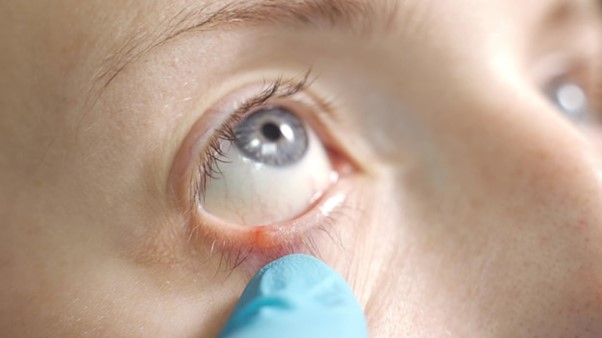Management of Blepharitis

Blepharitis is a common eyelid inflammation characterized by redness, swelling, and irritation. Management strategies aim to alleviate symptoms, reduce inflammation, and improve overall eyelid hygiene.
Hygiene Practices
Daily Cleaning: Gentle cleansing of the eyelid margins with warm water and mild, preservative-free cleansers helps remove debris, crusts, and excess oils, reducing bacterial overgrowth.
Warm Compresses: Applying warm compresses to the eyelids helps soften crusts, unclog meibomian glands, and improve tear film quality, promoting eyelid health.
Topical Treatments
Antibiotics: Topical antibiotics, such as erythromycin or azithromycin ointment, may be prescribed to reduce bacterial colonization and inflammation, particularly in cases of anterior blepharitis.
Steroids: In severe cases or when inflammation is prominent, short-term use of topical corticosteroids may be recommended to alleviate symptoms and reduce inflammation.
Meibomian Gland Management
Lid Massage: Gentle massage of the eyelids can help express meibomian gland secretions, improving tear film stability and reducing symptoms associated with meibomian gland dysfunction.
Lubricants: Use of artificial tears or ointments, particularly those containing lipids, can help restore tear film composition and relieve dry eye symptoms associated with blepharitis.
Nutritional Supplements
Omega-3 fatty acid supplements may be beneficial in reducing inflammation and improving meibomian gland function. Patients may be advised to incorporate omega-3-rich foods into their diet or take supplements under medical guidance.
Long-Term Management
Blepharitis is often a chronic condition requiring long-term management. Patients should adhere to good eyelid hygiene practices, attend regular follow-up appointments, and seek medical attention if symptoms persist or worsen.


